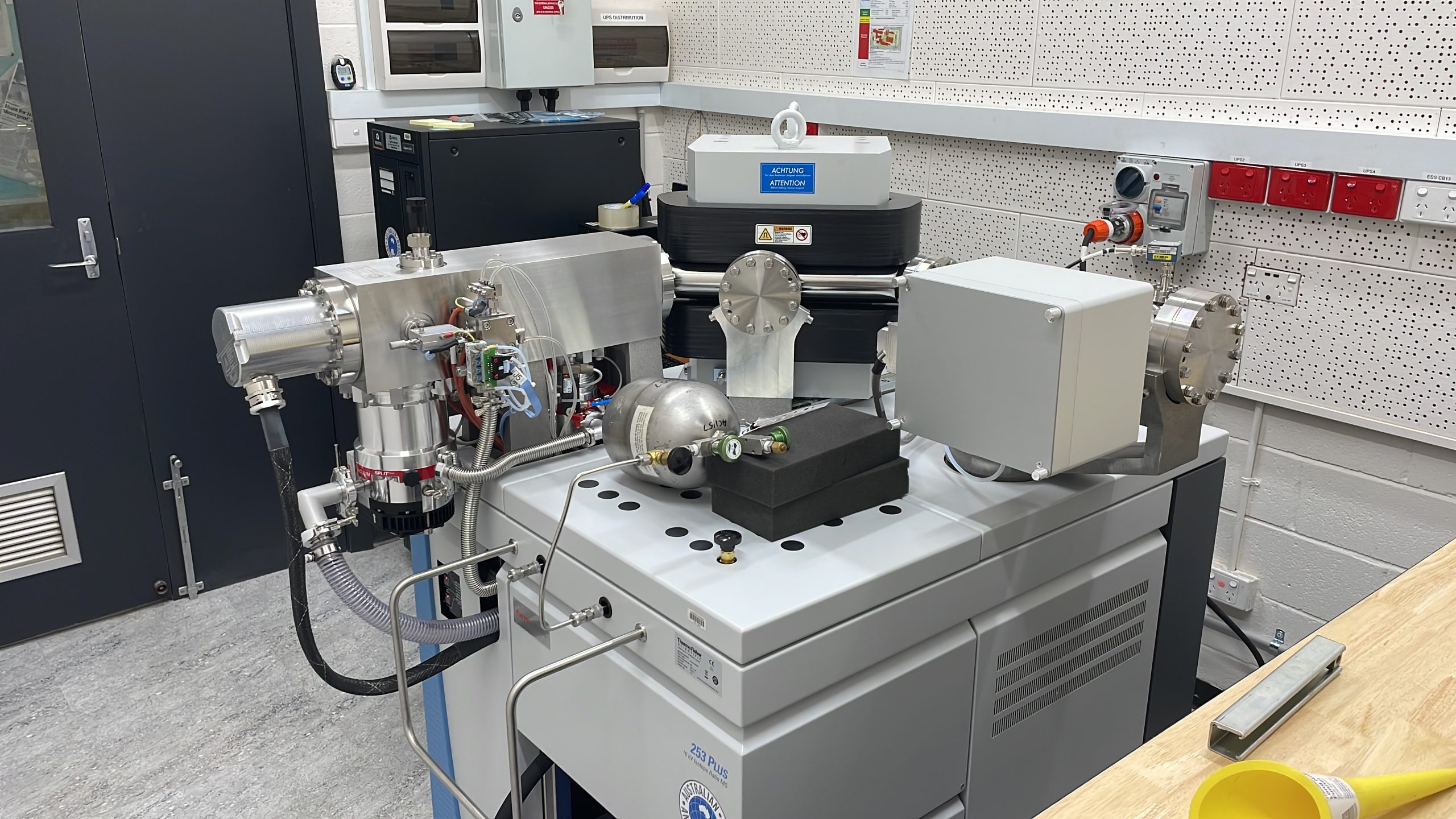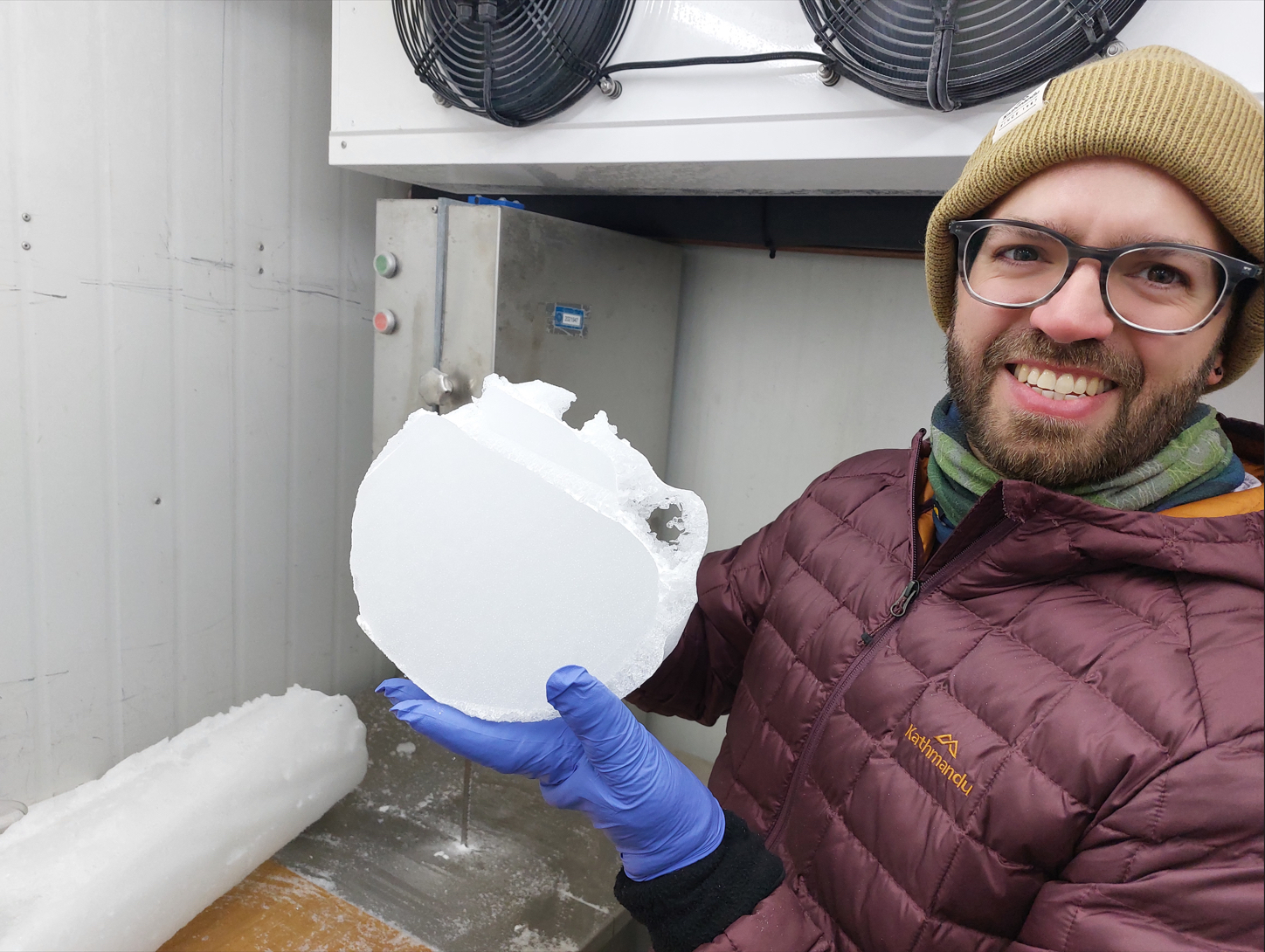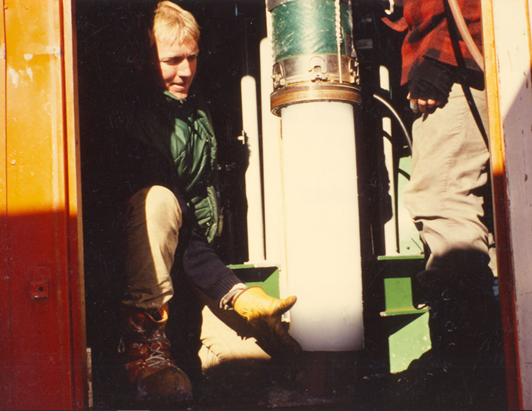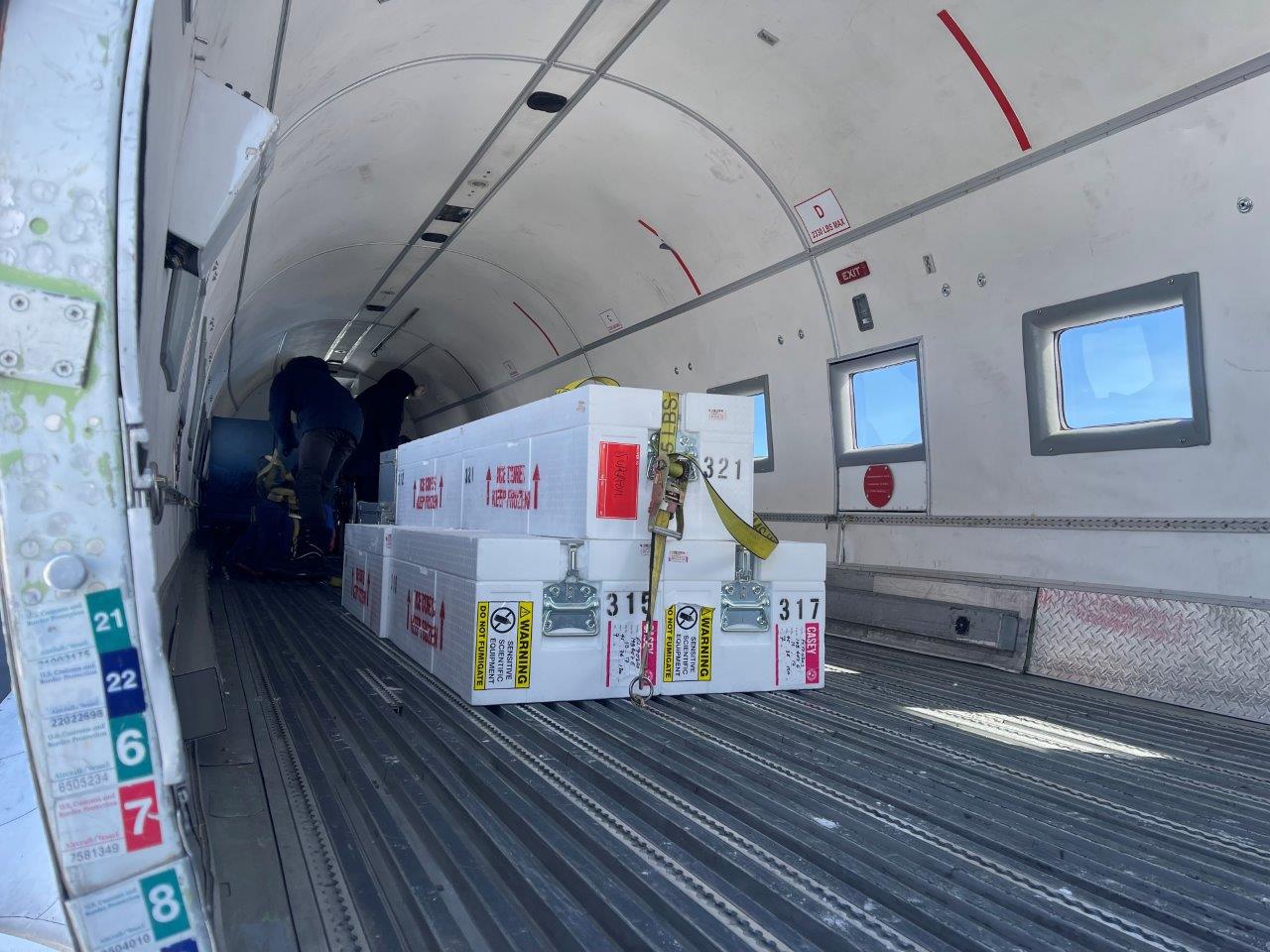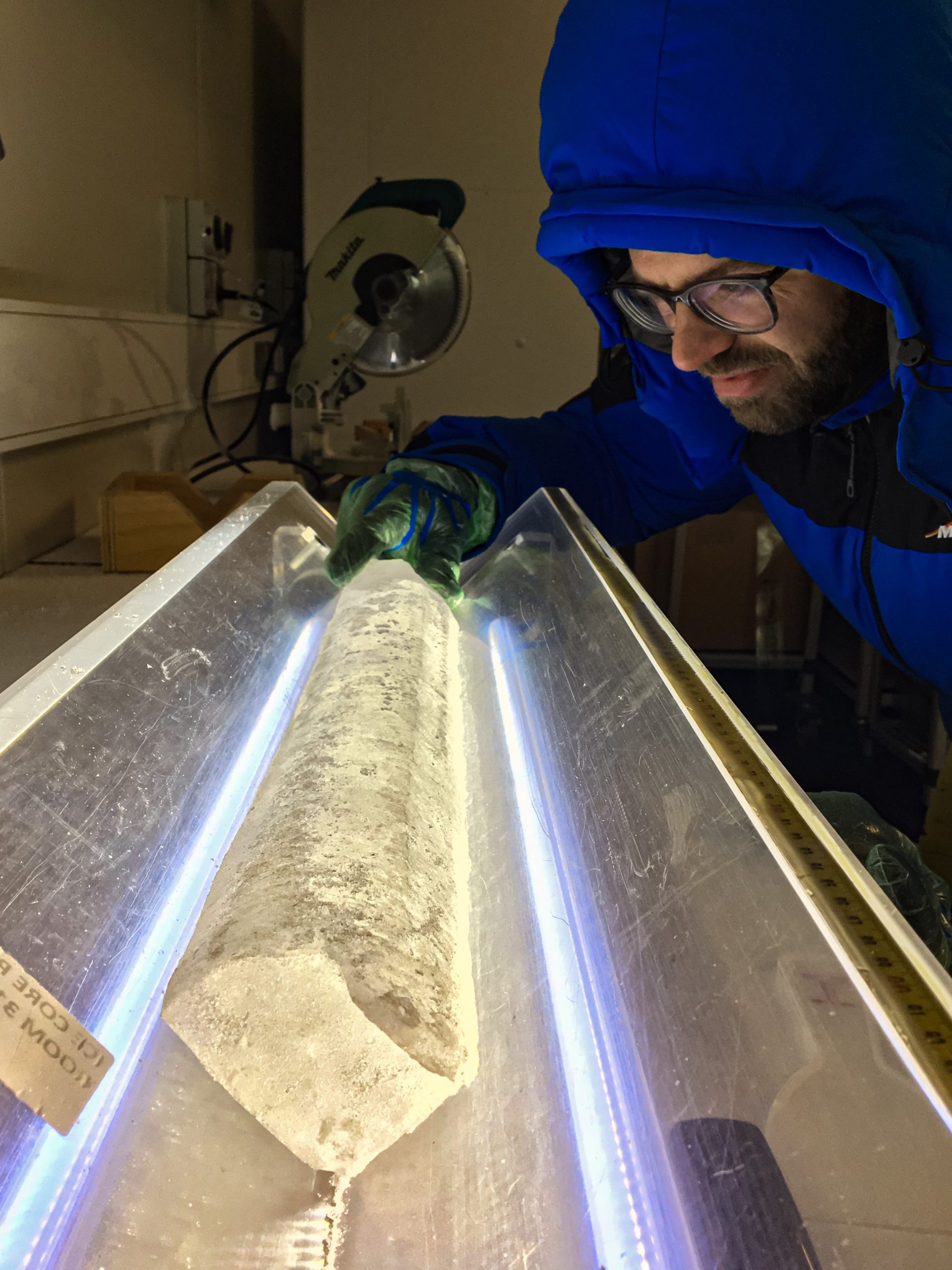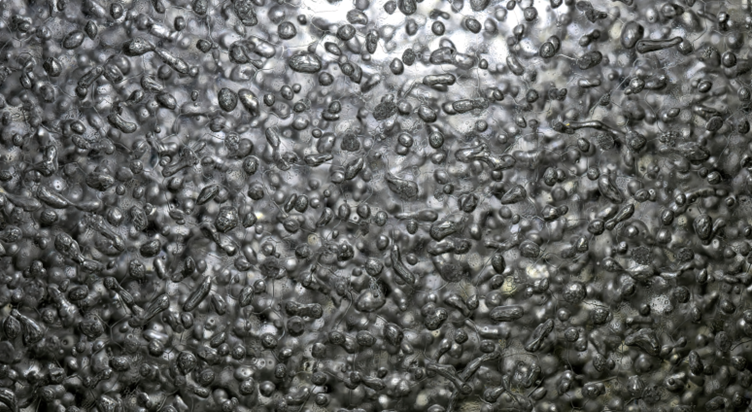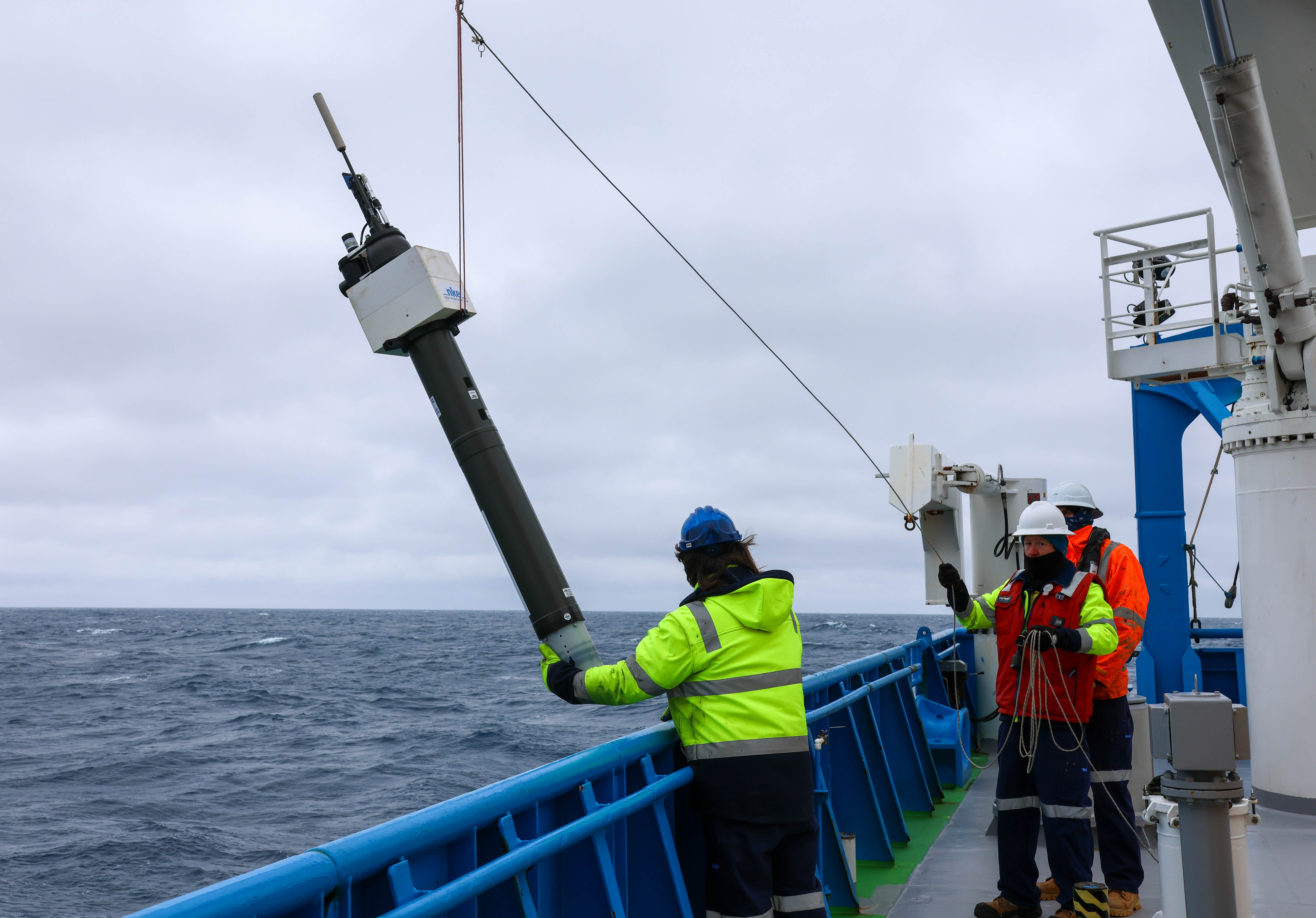New ice core lab to analyse million-plus years of climate history
9 March 2023
Through the Million Year Ice Core project, Tasmania is gaining an entirely new climate research capability at the Institute for Marine and Antarctic Studies in Hobart.
Dr Andy Menking of the Australian Antarctic Program Partnership is currently testing the mass spectrometer that will read the atmospheric data from air bubbles trapped in the ice core archives.
“I’m fortunate to be setting up the new mass spectrometer with our partner agency CSIRO at their Global Atmospheric Sampling Laboratory (GASLAB) in Aspendale Victoria.”
“CSIRO’s ICELAB-GASLAB facility has been producing quality data from their spectrometer for the last thirty years, which is perfect for calibrating our new Isotope Ratio Mass Spectrometer.”
“I’m able to extract an ice sample, analyse the air bubbles on our new machine, walk across the hall, and check it on CSIRO’s older machine,” said Dr Menking.
Once this stage of testing is complete, measurements will be made of ice core air from recent decades through to pre-industrial times. Then will come the delicate task of moving the sensitive equipment from CSIRO to Hobart.
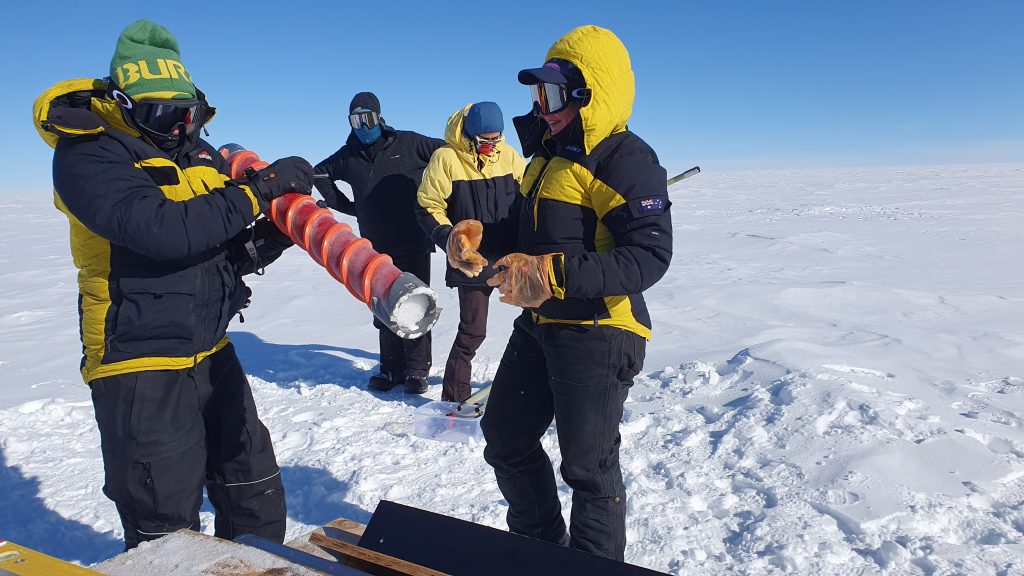
Birthday ice
Million Year Ice Core project leader Dr Joel Pedro, from the Australian Antarctic Division, said that AAD and CSIRO have been international leaders in ice core CO2 research in the past, and new research this decade will build on that world-class expertise.
He paid credit to Dr Menking for his skilled and painstaking work to develop the new system and test it on ice drilled from Law Dome in east Antarctica in 1987.
“Coincidentally (or not?), the 234-metre deep DE08 ice core Andy is using was drilled at Law Dome by CSIRO’s Dr David Etheridge in the year Andy was born.”
“It’s trendy these days to put the CO2 concentration of your birth year in your social media profile. But building a new system and measuring the CO2 in an ice core drilled in your birth year – respect!” Dr Pedro said.
Since 1987, the DE08 ice core (and newer cores drilled from the same site) has produced some of the main records of greenhouse gases, their isotopes, and ozone depleting gases over the anthropogenic era, used in climate and ozone assessments by the Intergovernmental Panel on Climate Change, World Meteorological Organisation and United Nations Environment Program.
Uncommon and difficult
The Isotope Ratio Mass Spectrometer (IRMS) ionises gas molecules to allow the precise measurement of mixtures of naturally occurring stable isotopes in ice core air bubbles, such as 13C/12C and 18O/16O ratios in atmospheric CO2.
Isotopes are different species of the same element, and their ratios indicate whether the CO2 came from oceanic or terrestrial carbon pools.
Dr Menking has adapted an ‘off-the-shelf’ IRMS for the Million Year Ice Core project by adding a purification line to extract CO2 from air bubbles in the ice samples.
“All water vapour must be removed from the air sample, and the purification line separates out the CO2 we want to measure.”
The process involves first shaking ice core samples in an abrasive vacuum chamber known as a ‘cheese grater’, and then extracting the air released through a frozen stainless-steel tube at a temperature of 12 Kelvin (minus 261oC).
“Technically, this measurement is not new, but there’s only a small handful of labs in the world that do it on ice core air.”
“For the current work on the last two millennia, we’re using relatively large amounts of ice from the Australian archives, which allows us to measure a suite of other gas concentrations in CSIRO’s GASLAB.”
“The work is difficult enough with large samples, but the real challenge will be scaling the methods down to work on small samples from the Million Year Ice Core,” Dr Menking said.
Climate-carbon feedback
To put modern global warming in context, Dr Menking said we need to know how greenhouse gases varied prior to industrialisation and what processes controlled them.
“Our IRMS analysis will enable us to fill in gaps and resolve discrepancies in the records of CO2 isotopes and give us greater detail of the feedback between the carbon cycle and climate,” he said.
Shallower cores will be used to provide a detailed record of atmospheric composition and quantify feedbacks between climate and atmospheric chemistry and the carbon cycle over the last few thousand years with decadal resolution. Ice cores drilled by the Australian Antarctic Program from Law Dome, Aurora Basin North and Mount Brown South are well suited for this.
Deep time
Dr Pedro said a selection of 7-metre-long cores will be the first ice from the Million Year Ice Core (MYIC) site at Little Dome C to be analysed by the new ice core lab – not for gas but their chemistry.
“Analysis of the cores retrieved from Little Dome C this summer will give us our first look at snow chemistry and preservation of climate and environmental data at the site, over the last 200 years of snowfall,” said Dr Pedro.
Over the next five years or so, the MYIC project aims to recover a continuous Antarctic ice core delving nearly three kilometres into the ice sheet and at least 1.2 million years into the past.
“The MYIC will nearly double the age of the existing oldest ice core record, reaching back to a period where the ice age cycles became faster and less intense.”
“The data on climate and environmental conditions preserved in the ice is needed to resolve why this change of pacing occurred and to help answer larger open questions about climate, carbon cycle and cryosphere feedbacks,” he said.
Compressed history
Gas measurements require ice from beyond 60 metres deep where air bubbles are locked in.
“The deeper and older we go, the ice gets more compressed, with 15,000 years of atmospheric history archived in only one metre of ice,” said Dr Pedro.
This means the capability to process very small sample volumes is key for MYIC analysis in the future, which will apply techniques developed by team member Dr Daniel Baggenstos using a quantum cascade laser absorption spectrometer.
“The oldest ice record will enable us to figure out the implications for future climate, sea-level and ice sheet stability, and whether past interglacial conditions can be analogues of future warming,” Dr Pedro said.
The Australian Antarctic Program Partnership is led by the University of Tasmania, with partner agencies CSIRO, Institute for Marine and Antarctic Studies, Bureau of Meteorology, Australian Antarctic Division, Geoscience Australia, Integrated Marine Observing System, and the Tasmanian Government.

